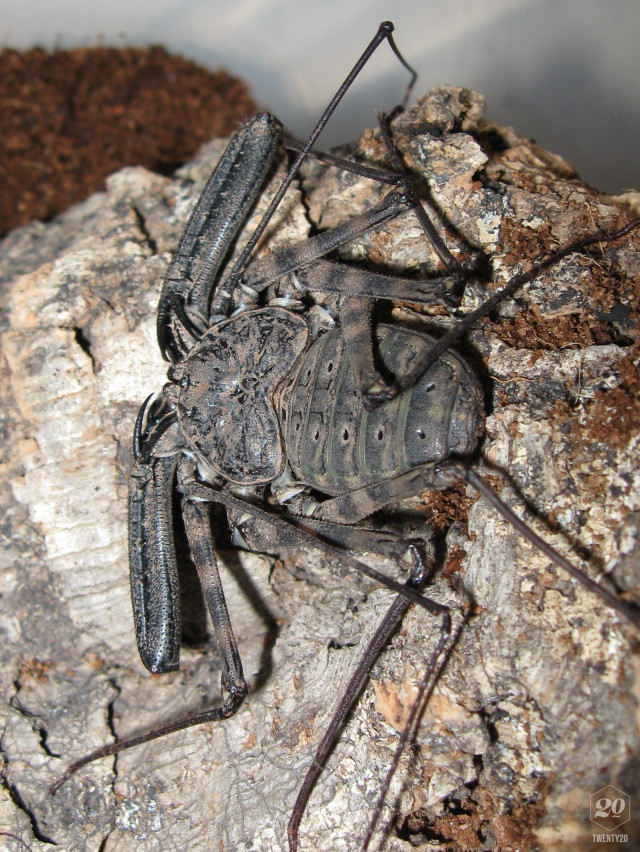ANIMAL: Tanzanian Giant Tailless Whip Scorpion Damon diadema Type of Animal: Tailless Whip Scorpion Habitat: Tree hollows, rock crevices, caves, fallen logs Location(s): C & E Africa Appearance: Very long slender antennae-like front pair of legs, highly developed spiny pincer-like pedipalps (appendages in front), dull brown to grayish coloration, one of the largest tailless whip scorpions Food/Diet: Insects, insect larvae, small frogs, small lizards. Molting animals occasionally cannibalized. Status in Wild: Stable Conservation: Breeding from zoos & breeders Lifestyle: Solitary or small colonies (same-sex individuals often related to each other & usually colonies have more females than males). Additional Info: Called: Male Female Young: Scorpling Group: Colony Weight: Male: 0.009 oz Female: 0.035 oz Gestation: 6 months Life Span: Males: 3-10 years Females: 15-20 years Body Length: Male: 0.5 in Female: 3 in Leg Span: Male: 7.5 in Female: 10 in Main predators are mammals, birds, reptiles, & amphibians. Use pedipalps to catch prey & in defense. Active at night (nocturnal). When exposed in open, they’ll become immobile & flatten themselves to ground. Another defense mechanism is scattering in all direction. They’ll only use pedipalps as last resort. Sometimes engage in fights to the death. They molt every few months when young & once a year when adults. After molting, it takes 7-10 days to fully harden again. To have successful molt, they need to stretch out & hang upside down. Courtship involves male guiding female to deposited sperm packet & inserting it into reproductive opening. Female carries 6-60 eggs in sac attached to abdominal underside, nourishing embryos. Once eggs hatch, little scorplings white in color & carried on mom’s back for up to a week before 1st molt. Reach maturity at 2 years old. Fun Fact(s): These animals rarely bite if disturbed but can grab fingers w/ pedipalps resulting in thorn-like puncture injuries. Also called Tailless Whip Scorpion, Giant Tailless Whip Scorpion, Tanzanian Tailless Whip Scorpion, Giant Amblypygid, African Whip Spider, & Tanzanian Whip Spider among others. Interestingly, these arachnids are neither scorpions nor spiders. These animals are from order known as Amblypygids-Latin for “blunt tail.” Unlike true spiders & scorpions, these animals don’t have silk glands or venom. Unlike many arachnids, they move sideways.
